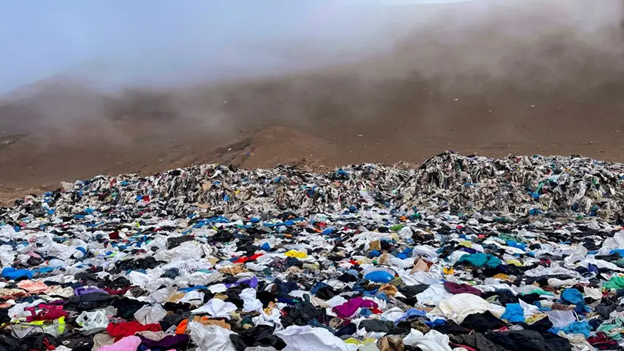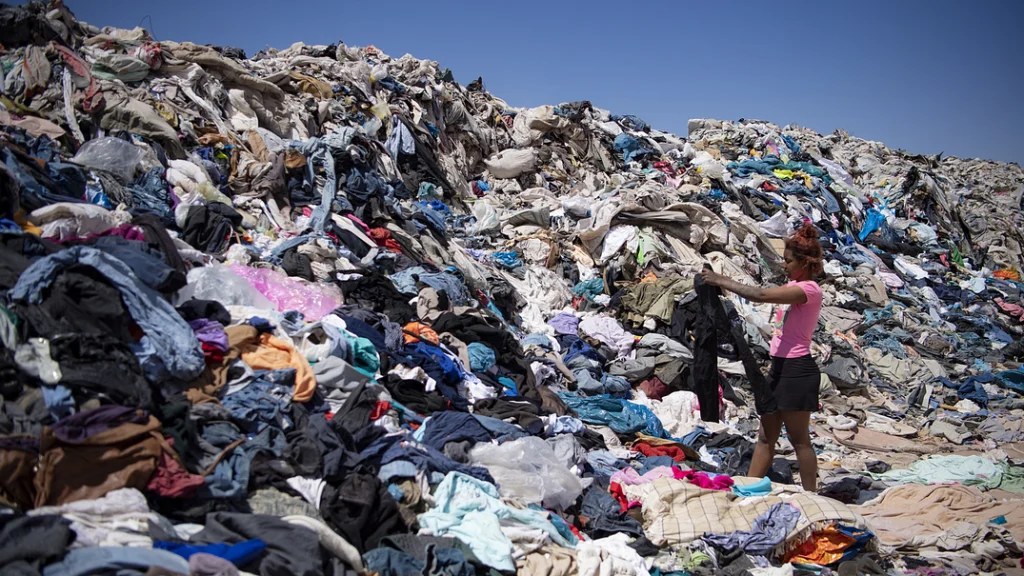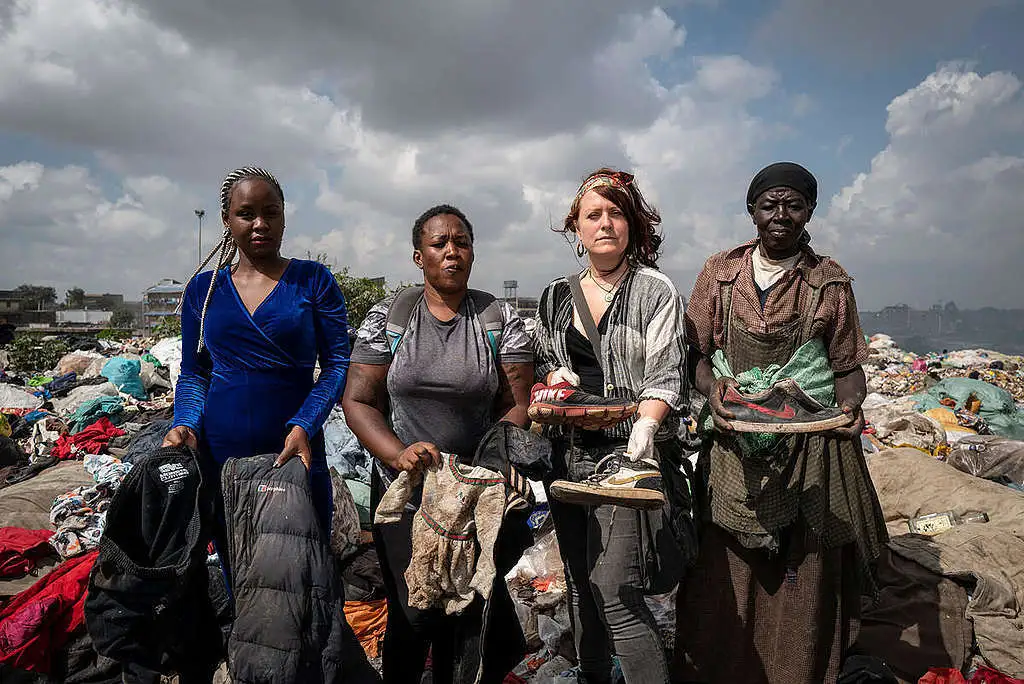Fast fashion refers to the rapid production of inexpensive clothing by mass-market retailers in response to the latest fashion trends. It’s characterised by quick turnover and low prices, encouraging consumers to frequently purchase new items. This model relies on cheap labor, often in developing countries, and utilises cost-cutting measures in production to keep prices down. Essentially, fast fashion prioritises speed and affordability over quality and sustainability.
The global fashion industry encompasses the design, production, marketing, and sale of clothing and accessories worldwide. It’s a massive industry worth billions of dollars, with major fashion hubs in cities like Paris, Milan, and New York. While it drives creativity and self-expression, the industry also faces criticism for its environmental impact, labor practices, and promotion of consumerism.
Table of Contents
Environmental Impact of Fast Fashion
These factors collectively illustrate the extensive and detrimental environmental impact of fast fashion, highlighting the urgent need for more sustainable and ethical practices within the industry.
- Resource Depletion: Fast fashion consumes vast amounts of water in production processes like dyeing and finishing, contributing to water scarcity in many regions. Additionally, it exhausts non-renewable resources such as fossil fuels used in manufacturing and transportation.
- Pollution from Textile Production: The textile industry releases harmful chemicals and pollutants into the environment, including dyes, solvents, and heavy metals. These pollutants contaminate water sources and soil, posing risks to ecosystems and human health.
- Chemical Usage: Hazardous chemicals used in textile production, such as azo dyes and formaldehyde, not only pollute the environment but also pose health risks to workers and consumers, causing allergies, respiratory issues, and other ailments.
- Waste Generation: Fast fashion’s disposable nature leads to high levels of textile waste. Unsold or unwanted garments often end up in landfills, where they decompose slowly and release methane, a potent greenhouse gas, exacerbating climate change.
- Water Consumption and Contamination: The fashion industry is one of the largest consumers of water globally, with processes like cotton cultivation and dyeing requiring substantial amounts. Moreover, wastewater from textile factories often contains harmful pollutants, contaminating waterways and harming aquatic life.
- Contribution to Climate Change: Fast fashion’s reliance on cheap labor and global supply chains results in high carbon emissions from transportation and production processes. Additionally, the cultivation of materials like cotton and the use of synthetic fibers contribute to greenhouse gas emissions and deforestation.
- Negative Effects on Biodiversity: The expansion of cotton and other fiber crops for fast fashion leads to habitat loss and biodiversity decline. Pesticide use in conventional cotton farming further harms ecosystems, affecting wildlife and soil health.
Water Consumption and Contamination
Water consumption and contamination are critical issues within the fast fashion industry.
High Water Usage
Fast fashion relies heavily on water throughout its production processes, from growing crops like cotton to dyeing and finishing textiles. For instance, it can take thousands of liters of water to produce a single garment. This excessive water consumption exacerbates water scarcity, particularly in regions already facing water stress.
Water Pollution
The textile industry is a major contributor to water pollution, releasing a variety of harmful chemicals and pollutants into waterways. Wastewater from dyeing, printing, and finishing processes contains heavy metals, toxic dyes, and other hazardous substances, contaminating rivers, lakes, and oceans. This pollution harms aquatic ecosystems, disrupts wildlife habitats, and poses risks to human health, especially in communities living near textile factories.
Impact on Communities
Water contamination from fast fashion production disproportionately affects vulnerable communities, particularly in developing countries where regulations may be lax and environmental standards poorly enforced. These communities often rely on polluted water sources for drinking, bathing, and agriculture, leading to serious health problems and economic hardships.
Sustainable Solutions
Addressing water consumption and contamination in the fashion industry requires implementing sustainable practices throughout the supply chain. This includes investing in water-efficient technologies, adopting eco-friendly dyeing and finishing methods, and treating wastewater before discharge. Additionally, promoting consumer awareness and responsible purchasing habits can help reduce the demand for water-intensive and polluting fashion products.
Contribution to Climate Change
The fashion industry, particularly fast fashion, significantly contributes to climate change through various processes:
- Carbon Emissions: Fast fashion’s global supply chain involves extensive transportation of raw materials, garments, and finished products, leading to substantial carbon dioxide emissions. From sourcing materials to manufacturing to distribution, each stage of the production process emits greenhouse gases, exacerbating climate change.
- Energy Consumption: The manufacturing of textiles and garments in fast fashion requires vast amounts of energy, primarily derived from fossil fuels. This energy-intensive process releases greenhouse gases such as carbon dioxide and methane, further contributing to global warming.
- Deforestation: Fast fashion’s demand for raw materials like cotton and wood-based fibers like viscose contributes to deforestation. Deforestation releases stored carbon into the atmosphere and diminishes the forests’ capacity to absorb carbon dioxide, intensifying climate change.
- Chemical Usage: Chemical-intensive processes in textile production, such as dyeing and finishing, release pollutants and greenhouse gases. Chemicals like perfluorinated compounds (PFCs) used in waterproofing textiles and nitrous oxide emitted during synthetic fiber production contribute to the greenhouse effect and ozone depletion, exacerbating climate change.
- Waste Generation: Fast fashion’s disposable nature leads to high levels of textile waste, much of which ends up in landfills. As textiles decompose, they release methane, a potent greenhouse gas that contributes to global warming.
- Melting Ice Caps and Rising Sea Levels: Climate change resulting from fast fashion’s contributions to greenhouse gas emissions leads to the melting of ice caps and glaciers, contributing to rising sea levels. This phenomenon threatens coastal communities and ecosystems, exacerbating climate-related disasters such as floods and storms.
Negative Effects on Biodiversity
Firstly, it destroys animal homes. When farms grow cotton or other fibers for clothes, they often cut down forests or clear land. This hurts animals by taking them away from where they live.
Secondly, fast fashion uses lots of chemicals. These chemicals can leak into rivers and lakes, making water dirty and hurting fish and other creatures that live there.
Lastly, it reduces the variety of living things. When farms only grow one type of crop, like cotton, it’s called monoculture. This makes it easier for pests to destroy the crop and can hurt the soil. It’s like having only one type of food to eat every day. We need to protect nature by using fewer chemicals, planting more trees, and choosing clothes made in ways that don’t harm the Earth.
Human Health Concerns
Firstly, the chemicals used in making clothes can be harmful. Workers in factories may breathe in these chemicals or absorb them through their skin, leading to health problems like skin rashes, breathing issues, and even long-term diseases.
Secondly, many garment workers in fast fashion factories work in poor conditions. They may work long hours for low pay in buildings that are not safe. This can lead to physical problems like back pain or injuries from accidents, as well as mental stress and exhaustion.
Lastly, the pressure to keep up with fast fashion trends can affect consumers too. People may feel stressed to constantly buy new clothes, leading to financial strain and psychological stress. Additionally, the cheap materials and dyes used in fast fashion clothing can sometimes cause skin irritation or allergic reactions in wearers.
Overall, fast fashion can have negative impacts on both the workers who make the clothes and the people who wear them. It’s important to support companies that prioritize worker safety and environmental health and to consider the health implications of our fashion choices.
Consumer Behavior and Waste
The fast-paced trend cycle encourages frequent purchases and rapid disposal of clothing. People often buy cheap, trendy items that they may only wear a few times before discarding them, leading to a large amount of textile waste.
Secondly, the rise of online shopping and fast delivery services in the fashion industry has led to increased packaging waste. Each order comes with packaging materials like plastic bags and cardboard boxes, much of which ends up in landfills.
Lastly, the low quality and short lifespan of fast fashion items contribute to their disposal. Clothes are often made with cheap materials and construction, causing them to wear out quickly and lose their shape after only a few washes. This leads to more frequent replacements and further adds to the waste problem.
To reduce waste in the fashion industry, consumers can adopt practices such as buying fewer, higher-quality items, supporting sustainable and ethical brands, and donating or recycling clothing instead of throwing it away. By making conscious choices about what we buy and how we dispose of it, we can minimize the environmental impact of our fashion consumption.
Conclusion
Fast fashion poses serious threats to the environment and human health. Its rapid production cycle and emphasis on low-cost, disposable clothing contribute to resource depletion, pollution, and waste generation on a massive scale. From high water usage and contamination to carbon emissions and biodiversity loss, the environmental impacts of fast fashion are far-reaching and detrimental.
Furthermore, fast fashion’s exploitation of cheap labor and promotion of consumerism also have social and ethical implications. Workers in garment factories often face unsafe working conditions and low wages, while communities near textile production sites suffer from pollution and health risks. To address these issues, both industry and consumers need to prioritize sustainability, ethical practices, and responsible consumption.







